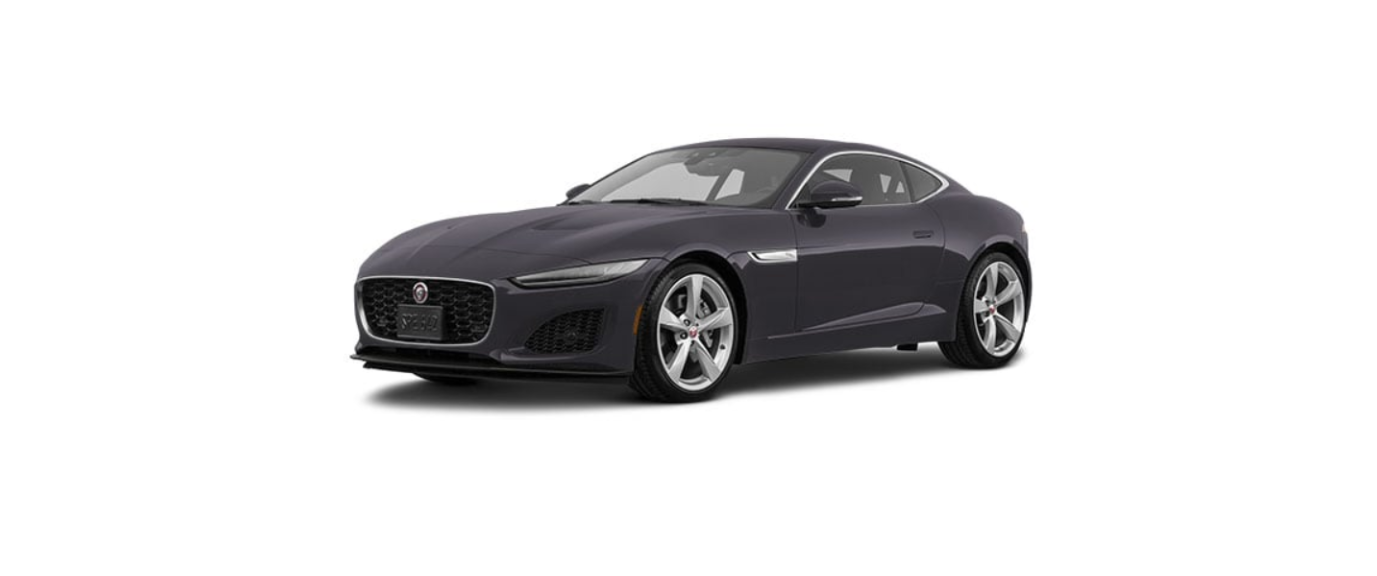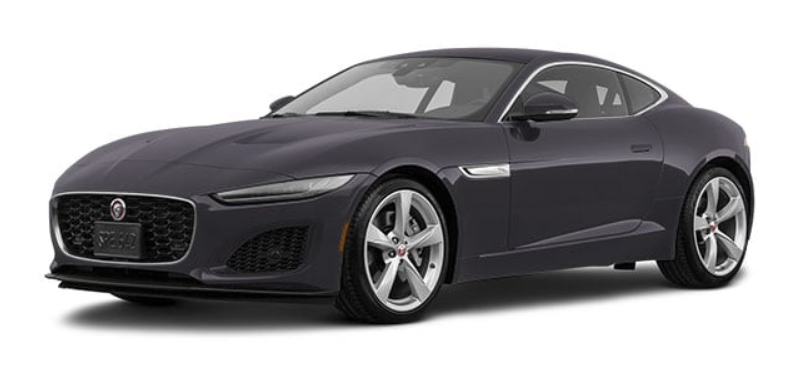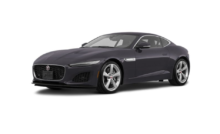2022 Jaguar F-TYPE Portable Media Owners Manual




2022 Jaguar F-TYPE Portable Media


PORTABLE MEDIA SAFETY
Make sure the following warnings and cautions have been read and fully understood before using any of the portable media controls or features. Failure to use the portable media controls or features safely could result in an accident, leading to serious injury, death, or damage to the vehicle and its components.
Do not adjust the touchscreen controls, or allow the system to distract the driver, while the vehicle is moving. Driver distraction can lead to accidents.
Make sure that any media devices are stored securely while the vehicle is in motion. Any loose objects are potential hazards during sudden maneuvers, emergency braking situations or accidents.
Sustained exposure to high sound levels, greater than 85 decibels, can damage hearing.
Read the manufacturer’s instructions for any device before it is connected to the media system. Make sure that the device is suitable. Comply with any instructions regarding connection and operation. Failure to do so may result in damage to the vehicle’s media system or the media device.
It is recommended not to use a hard disc drive via the USB link. The devices are not designed for in-vehicle use and may be damaged.
USB memory stick devices exceeding 3 inches (70mm) in length, must not be connected to the media hub. Using devices exceeding this length can result in damage to the media device or hub on closure of the cubby box lid on the center console.
If an iPod is connected, disconnect before leaving the vehicle. Failure to do so may result in the iPod battery discharging.
Avoid spilling or splashing liquids onto the touchscreen. The spilling or splashing of liquids could cause the touchscreen to malfunction or even lead to complete failure.
PORTABLE MEDIA CONNECTIONS
Make sure the relevant safety warnings and cautions have been read and understood before driving the vehicle. See PORTABLE MEDIA SAFETY.
Portable media devices can be connected to the media hub, located in the center console’s cubby box. See STORAGE COMPARTMENTS.
Compatible portable devices include:
- USB mass storage devices, e.g., a memory stick. Devices must use FAT or FAT32. NOTES
External hard drives are not recommended for use. Doing so could reduce the life of the device.
NOTESIt is recommended that the USB mass storage device does not exceed 128GB. USB mass storage devices exceeding the maximum recommendation could cause a malfunction of the infotainment system.
NOTESDepending on the memory size of the USB mass storage device, a time delay may be evident before the stored files can be accessed.
- iPod: iPad, iPod Touch, iPod Mini, iPhone, iPod Nano and iPod Classic Gen4, Gen5, Gen6 are supported. Full functionality for older devices cannot be guaranteed. iPod Classic Gen1, Gen2, Gen3, and iPod Shuffle are not supported. NOTES
Album artwork displays if the iPod device is fully supported. Some Generation level devices cannot recognize or support the album artwork.
If connecting an iPod, mass storage, or Bluetooth® wireless technology device, use the touchscreen to operate and search the device.
The media system plays MP3, WMA, AIFF, M4A, FLAC, AAC, and ALAC files. Other formats are available.
If a software update has been activated on the connected portable media device, it is necessary to restart the media device. Restarting the device makes sure it is recognized by the media system.
To maximize playback quality, it is recommended that lossless compression is used for any media files on USB mass storage devices. Failing this, it is recommended that compressed files utilize a minimum bit rate of 192 kb/s. A higher bit rate is strongly recommended.
iPod is a trademark of Apple Inc., registered in the US and other countries.
Some MP3 players have a file system that is not supported by the system. To use an MP3 player, set it to USB Removable Device or Mass Storage Device mode.
Information on pairing and connecting a Bluetooth wireless technology device can be found in the relevant section of the Owner’s Handbook. See PAIRING AND CONNECTING USING THE MEDIA PLAYER.
Further information on Bluetooth wireless technology can be found in the relevant section of the Owner’s Handbook. See BLUETOOTH® INFORMATION.
For a list of compatible Bluetooth devices, please refer to the Jaguar website at: www.jaguarusa.com.
The Bluetooth devices listed have been tested for compatibility with Jaguar Land Rover vehicles. Performance varies, based on the device’s software version and battery condition. Devices are warranted by the device’s manufacturer, not the vehicle manufacturer.
Dependent on the device being connected, certain functions e.g., Bluetooth pairing, may not be compatible.
CONNECTING A MEDIA DEVICE
Make sure the relevant safety warnings and cautions have been read and understood before driving the vehicle. See PORTABLE MEDIA SAFETY.
Portable media devices can be connected to the media hub, located in the center console’s cubby box. See STORAGE COMPARTMENTS.
Connect the media device to one of the available USB sockets.
Use the cable supplied with the media device to connect to the USB socket.
High-quality cables are recommended to be used with Apple devices, as this enhances operation.
A USB socket cannot be used to connect more than one USB device to the media system.
Devices connected to the USB ports are charged. Devices that are fully discharged do not play. Higher-rated devices that require more than 7.5W to charge may not display an indicator when charging. The devices still charge without the indicator being displayed.
Apple devices should be updated to the latest iOS version, otherwise, full support cannot be guaranteed.
Options, such as Repeat and Shuffle, relate to the device currently playing. The options do not apply to any subsequent device. Previous Repeat and Shuffle selections are deactivated when a new queue is created.
The available sockets vary, according to vehicle specification.
The SuperSpeed USB Trident Logo is a registered trademark of USB Implementer Forum, Inc.
PORTABLE MEDIA CONTROLS
Make sure the relevant safety warnings and cautions have been read and understood before driving the vehicle. See PORTABLE MEDIA SAFETY.
Portable media includes Media Library (internal storage), iPods, iPods, iPhones, USB mass storage, and Bluetooth® wireless technology devices.
Select the portable media device from the SELECT SOURCE screen. See MEDIA CONTROLS.
- Queue: Opens the current queue of tracks selected from portable media devices. To add a track, album, artist, or genre to the queue, touch and hold the respective item at any time. A pop-up list gives further instructions. NOTES
Selecting a track, album, artist or genre, not currently in the queue to play, causes the current queue to be erased.
- Find: Select the artist, album, or song icon to display results in alphabetical order. Select the more like this icon (11) to display a list of further available options: Genres, Videos, Folder Browse, etc.
Select Folder Browse to view the contents of the connected device, which are displayed as dictated by the file structure.
Select a file to start playback. Select a folder or sub-folder to view the contents.
To return to the MEDIA LIBRARY screen, touch the return icon.¹
NOTESAfter an artist, album, or song has been selected from the Find option, the SONGS screen continues to be displayed. To return to the MEDIA LIBRARY screen, touch the return icon.¹
- Source: Displays all media sources. The list of media devices is dynamically populated, based on whether the devices are connected. NOTES
Sound quality and volume levels available from connected media devices may vary widely.
- Track information display: Touch the displayed text to view a list of tracks in the album. Touch again to return to the current track information display. NOTES
Only connected devices that support ID3 tags display the information.
The instrument panel also displays the track information.
- Interactive time progress bar: Touch or drag to move forward or backward through the current track. NOTES
Only connected devices that support the interactive time progress bar have this function.
- Album image display: Touch to view the list of tracks on the album, the queue list, or information for the current track. Touch again to revert back to the previous view, or press the return icon.¹ NOTES
Album artwork is displayed if the media is recognized by Gracenote®. If the album artwork is not recognized, a generic image is displayed.
- Media library shortcut: Touch to view the MEDIA LIBRARY screen.
- Skip or scan forward:
Touch and release to skip forward to the next track.
Touch and hold to scan forward through the current track. Playback resumes, when released.
Swipe the touchscreen to the left to skip to the next track.
- Pause or play: Select to pause playback. Select again to resume playback.
- Skip or scan backward:
Touch and release to skip back to the previous track.
Touch and hold to scan backward through the current track. Playback resumes, when released.
Swipe the touchscreen to the right to skip to the previous track.
- More like this icon: Select to automatically generate a smart playlist based on similar tracks. Touch, at any time, to create a new list based on the track currently being played. NOTES
Loading time is dependent on content type.
- Repeat icon: Touch to repeat the current track continuously. The repeat icon is highlighted when active. Touch again to cancel. NOTES
Additional repeat functionality options may be available depending on the portable device connected.
- Settings icon: Touch to access the SETTINGS pop-up menu. Select Media Player settings to manage the importing and deleting of files stored in the vehicle’s memory. NOTES
The option to import/rip media is dependent on the vehicle’s infotainment and market specification. Not all levels of infotainment are fitted with an internal hard drive. If the vehicle’s infotainment system does not include a hard drive, the feature to import/rip media is not available.
- Shuffle icon: Touch to shuffle the current music queue continuously. The shuffle icon is highlighted when active. Touch again to cancel.
return icon.¹
PLAYING A PORTABLE DEVICE
Make sure the relevant safety warnings and cautions have been read and understood before driving the vehicle. See PORTABLE MEDIA SAFETY.
Use the touchscreen controls to control playback, if using a USB mass storage device or compatible Apple device.
Use the touchscreen controls to control playback, if using a Bluetooth® wireless technology device. Some controls may be unavailable, depending on what the device and the media player system support.
CONNECTING MULTIPLE DEVICES
Multiple devices can be simultaneously connected to the portable media interface. Use the touchscreen to switch between the connected devices. Select iPod, USB, or Bluetooth to switch between inputs.
USB and iPod devices only: When switching back to a previous device, from another newly connected device, playback resumes from the point at which it was left. See CONNECTING A MEDIA DEVICE.
PAIRING AND CONNECTING USING THE MEDIA PLAYER
Make sure the relevant safety warnings and cautions have been read and understood before driving the vehicle. See PORTABLE MEDIA SAFETY.
The process of pairing and connecting the media device with the vehicle, using the media device, varies depending on the type of media device.
- Switch on the ignition. Make sure that the touchscreen is active.
- Touch the settings icon¹ from any screen.
- Select All Settings via the SETTINGS pop-up menu.
- Select Connectivity.
- Select Bluetooth.
- The BLUETOOTH SETTINGS screen is displayed. Select Pair New Device.
- The vehicle’s Bluetooth® wireless technology system remains discoverable while on the pairing screen.
- Using the media device, search for devices. On some media devices, this is referred to as a newly paired device. See the device’s operating instructions for further information. The vehicle’s name is displayed as the default discoverable name.
- When the vehicle’s discoverable name is discovered, follow the on-screen instructions. Select Yes, when prompted, to confirm the pairing. On some media devices, this completes the pairing. Alternatively, on other media devices, the vehicle’s system displays a PIN. When prompted, either enter the PIN on the device or select Yes to confirm that the PIN displayed matches the vehicle’s PIN.
- Once the media device is paired and connected to the system, a confirmation message is displayed. Either, select the return icon² or return to the previously selected media and select Source.
- Select the media device from the displayed media options.
If, when playing media through a wirelessly connected Apple device, the device is then also connected to a USB port, the wireless connection is disabled. To reconnect via wireless, the USB connection needs to be disconnected and the Apple device reconnected via the BLUETOOTH SETTINGS screen.
Apple devices containing a large quantity of media can take a considerable amount of time to synchronize. During this time, playback can only be accessed from the Apple device’s media player.
After the Apple device has been synced with the media system, the device can then be controlled via the media system. If the Apple device’s track list is updated after the device was previously synced, the device needs to be re-synced to the media system.
Further information on Bluetooth wireless technology can be found in the relevant section of the Owner’s Handbook. See BLUETOOTH® INFORMATION.
settings icon.¹
return icon.²
CHANGING/DISCONNECTING A DEVICE
Make sure the relevant safety warnings and cautions have been read and understood before driving the vehicle. See PORTABLE MEDIA SAFETY.
To connect or disconnect a paired Bluetooth® wireless technology device:
- Touch the settings icon¹ from any screen. Select All Settings via the SETTINGS pop-up menu.
- Select Features. Select Phone. Select Bluetooth settings. Alternatively, select Connectivity. Select Bluetooth.
- The BLUETOOTH SETTINGS screen displays. Select Paired Devices.
- Paired devices are listed. Select the device’s name, followed by Connect or Disconnect.
To unpair a paired Bluetooth device:
- Touch the settings icon¹ from any screen. Select All Settings via the SETTINGS pop-up menu.
- Select Features. Select Phone. Select Bluetooth settings. Alternatively, select Connectivity. Select Bluetooth.
- The BLUETOOTH SETTINGS screen displays. Select Paired Devices.
- Paired devices are listed. Select the device’s name, followed by Forget Device.
To forget all paired Bluetooth devices:
- Touch the settings icon¹ from any screen. Select All Settings via the SETTINGS pop-up menu.
- Select Features. Select Phone. Select Bluetooth settings. Alternatively, select Connectivity. Select Bluetooth.
- The BLUETOOTH SETTINGS screen displays. Select Forget All Devices.
settings icon.¹
IMPORTING/RIPPING MEDIA
Make sure the relevant safety warnings and cautions have been read and understood before driving the vehicle. See PORTABLE MEDIA SAFETY.
The option to import/rip media is dependent on the vehicle’s infotainment and market specification. Not all levels of infotainment are fitted with an internal hard drive. If the vehicle’s infotainment system does not include a hard drive, the feature to import/rip media is not available.
The vehicle’s internal storage is used for navigation data, speech data, and metadata databases. Media can also be imported and stored from USB memory devices, via the MEDIA PLAYER SETTINGS screen.
To select the MEDIA PLAYER SETTINGS screen:
- Select the settings icon¹ from any screen to access the SETTINGS pop-up menu.
- Select Media Player Settings.
settings icon.¹
VIDEO MEDIA PLAYER CONTROLS
Make sure the relevant safety warnings and cautions have been read and understood before driving the vehicle. See PORTABLE MEDIA SAFETY.
The system supports MPEG2 (.avi, .mpg), WMV9 (.wmv) and H.264 (.mp4, .avi, .mkv, .mov) files. Other formats may work, but the playback quality cannot be guaranteed.
To maximize the stereo sound playback quality, it is recommended not to playback video files with a resolution greater than 1 080p or a speed exceeding 30fps.
The quality of video playback may be affected by the USB memory device’s speed.
Select the portable media device from the SELECT SOURCE screen. See MEDIA CONTROLS.
- Queue: Opens the current queue of videos selected from the relevant device.
- Find: Touch to search, or select from the list of videos. The list is displayed in alphabetical order.
- Source: Touch to display all media sources. NOTES
The media source, e.g., USB memory device is displayed, only if the device is connected.
- Video information: Touch to select full screen mode or wait for the preview screen to time out. Touch the screen again to view the controls at any time.
- Interactive time progress bar: Touch or drag to move forward or backward through the current video track.
- Media library shortcut: Touch to view the MEDIA LIBRARY screen.
- Skip or scan forward:
Touch and release to skip forward to the next video track.
Touch and hold to scan forward through the current video track. Playback resumes, when released.
Swipe the touchscreen to the left, to skip to the next video track.
- Pause or play: Select to pause playback. Select again to resume playback. A second touch stops and resets the video.
- Skip or scan backward:
Touch and release to skip backward to the previous video track.
Touch and hold to scan backward through the current video track. Playback resumes, when released.
Swipe the touchscreen to the right, to skip to the previous video track.
- Zoom icon: Select to zoom in or out between the two available options.
- Repeat icon: Touch to repeat the current video continuously. The repeat icon is highlighted when active. Touch again to cancel.
- Settings icon: Touch to access the SETTINGS pop-up menu. Select Media Player settings to view all available settings options.
- Shuffle icon: Touch to shuffle the current video queue. The shuffle icon is highlighted when active. Touch again to cancel.
VIDEO MEDIA INHIBIT WITH VEHICLES FROM MOVING
When the vehicle is moving, the touchscreen displays a relevant safety message, and the video picture is automatically inhibited.
FULL-SCREEN VIEW
If full-screen mode is selected, operate the seek controls in the same manner as when in preview mode.
Recent Posts
VW Jetta Engine Fuse Box Diagram
Access the comprehensive 2010-2018 VW Jetta Passenger Fuse Box Diagram to troubleshoot electrical issues effectively.…
VW Jetta Passenger Fuse Box Diagram
Explore the comprehensive VW Jetta Passenger Fuse Box Diagram to troubleshoot electrical issues effectively. Understand…
2023 Ford F-150 Lightning Fuse Box Diagram
Under Hood Fuse Box Location Remove the front luggage compartment cover. Under Hood Fuse Box…
2022 Kawasaki NINJA H2 SX SE Brake Lever Adjuster Owner’s Manual
2022 Kawasaki NINJA H2 SX SE Brake Lever Adjuster Owner's Manual NOTICE Only adjust the front…
2023 Land Rover Range Rover Evoque Exiting The Vehicle Owners Manual
2023 Land Rover Range Rover Evoque Exiting The Vehicle SINGLE LOCKING WARNING Before exiting the…
2023 Land Rover Range Rover Evoque Front Seats Owners Manual
2023 Land Rover Range Rover Evoque Front Seats FRONT SEAT SAFETY Make sure to read…
